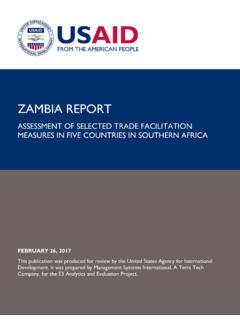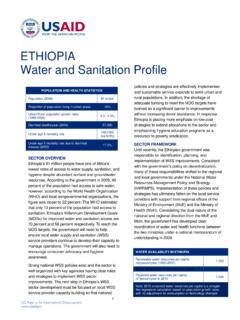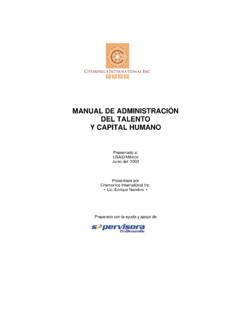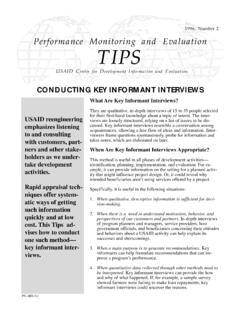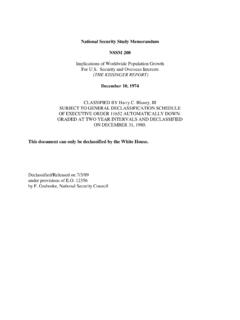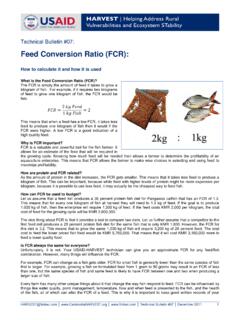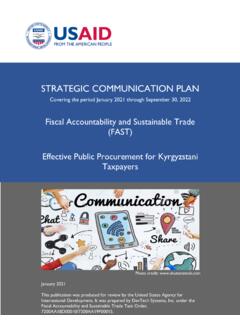Transcription of A Practical Guide to Conducting a Barrier Analysis
1 A Practical Guide to Conducting a Barrier AnalysisAbstract:The Practical Guide to Conducting a Barrier Analysis is a training curriculum that builds skills to plan and carry out a Barrier Analysis survey. The very Practical , hands-on learning exercises help learners to answer the most common and frequently perplexing questions that arise during implementation. The use of the survey as a behavior change tool is made clear by first introduc-ing the Designing for Behavior Change framework and the determinants of behavior change. The manual uses a step-by-step approach starting with the definition of the behavior to be studied and development of the Barrier Analysis questionnaire.
2 As part of the training course, a Barrier Analysis survey is conducted. The Guide covers topics including sampling, interviewing tech-niques, coding, tabulation and data use. After completing the course using The Practical Guide to Conducting a Barrier Analysis , trainees will be able to effectively plan and implement a Barrier Analysis survey and use the results to inform their behavior change strategy. This Guide was made possible by the generous support of the American people through the United States Agency for International Development (USAID), under the terms of a subgrant agreement to Helen Keller International MYAP 32025S002.
3 This Guide does not necessarily reflect the views of USAID or the United States Government. It may be reproduced if credit is properly citation: Kittle, Bonnie. 2013. A Practical Guide to Conducting a Barrier Analysis . New York, NY: Helen Keller International. Photos: Bonnie Kittle Contact information: Bonnie Kittle, Practical Guide to Conducting a Barrier Analysis Contents Acknowledgements .. i Abbreviations and Acronyms .. ii What s the Difference? .. 1 The Eight Steps of Planning .. 2 Lesson 1: Opening Session .. 10 Lesson 2: Overview of the Designing for Behavior Change Framework.
4 17 Lesson 3: The Exercise Exercise .. 31 Lesson 4: Identifying Determinants that Influence Behavior .. 35 Lesson 5: The Doer/Non-Doer Study and Barrier Analysis .. 41 Lesson 6: Introduction to the Questionnaire .. 53 Lesson 7: Step 1: Defining the Behavior for the Formative Research .. 61 Lesson 8: Step 2: Writing the Behavior Screening Questions .. 67 Lesson 9: Step 3: Writing the Research Questions .. 79 Lesson 10: Learning to Interview the Doer/Non-Doer Way .. 94 Lesson 11: Step 4: Organizing the Field Work (Including Sampling) .. 116 Step 5: Conducting the Study.
5 124 Lesson 12: Step 6: Coding, Tabulating, and Analyzing the Data .. 125 Lesson 13: Step 7: Using the Results to Make Decisions .. 140 Lesson 14: Closing Session .. 147 Annex 1: Answer Keys .. 153 Annex 2: Learning Needs and Resources assessment .. 158 Annex 3: Alternative Barrier Analysis Questionnaire Format .. 159 Annex 4: Explanation for Using the MS Excel Barrier Analysis Tabulation Sheet .. 164 Annex 5: Possible Review Activities and Review Questions .. 168 Annex 6: Barrier Analysis Review Questions .. 169 Annex 7: Daily Evaluation Form (Flip Chart).
6 171 Annex 8: Option Lesson: Interpreting the Data .. 172 Acknowledgements Acknowledgements A Practical Guide to Conducting a Doer/Non-Doer Study and Barrier Analysis draws heavily on both the 2011 version of the Designing for Behavior Change (DBC) Curriculum developed by Linda Morales, Judiann McNulty, Tom Davis, and Bonnie Kittle and the 2004 Barrier Analysis Facilitator s Guide written by Tom Davis. The creative skills of Tom Davis, Linda Morales, and Judiann McNulty are amply reflected in this Guide . The following people shared their insights into their experiences in organizing and Conducting Doer/Non-Doer Studies and Barrier Analyses and made suggestions for what to include in this Guide : Justin Colvard, Lotta Adelstal and Lucky Kalisya (Mercy Corps); Andrea Cuthrell and Jean Pierre Okitakoy (Food for the Hungry); Bernad Ochieng and Andy Melendez (American Red Cross); Erica Phillips (Cornel University); Sarah Bauler (Samaritan s Purse); Lael Kucera (Water for Life); Franck Flachenberg (Concern Worldwide).
7 And Marjolein Moreaux and Judiann McNulty (independent consultants). I am grateful for the support of Mitzi Hanold (Food for the Hungry) for sharing ideas on how to teach coding and of the participants in my October 2012 DBC course for providing responses that allowed me to design the coding game. The quality improvement verification checklist (QIVC) is based on one initially developed by Food for the Hungry. Many thanks to Tom Davis, Mitzi Hanold, and Mary DeCoster (Food for the Hungry); Justin Colvard (Mercy Corps); and Jennifer Nielsen (Helen Keller International) who took time from their busy schedules to review the draft curriculum and make very helpful recommendations.
8 Finally, I appreciate the opportunity that Helen Keller International/Democratic Republic of Congo afforded me to develop this Practical Guide because it will not only support their work, but will be used by scores of other organizations to improve social and behavior change (SBC) programming around the world. Bonnie Kittle April 2013 i A Practical Guide to Conducting a Barrier Analysis Abbreviations and Acronyms AIDS acquired immune deficiency syndrome ANR agriculture and natural resources ARI acute respiratory infection CBO community-based organization CGV Care Group Volunteer DBC Designing for Behavior Change EBF exclusive breastfeeding HIV human immunodeficiency virus IPM integrated pest management IPTT Indicator Performance Tracking Table ITN insecticide-treated bednet KPC knowledge, practice, and coverage (survey)
9 LNRA Learning Needs and Resources assessment MCHN maternal and child health and nutrition NGO nongovernmental organization NRM natural resource management PD Positive Deviance QIVC quality improvement verification checklist SBC social and behavior change WASH water, sanitation, and hygiene ii What s the Difference? What s the Difference? Some have asked what the difference is between the Designing for Behavior Change (DBC) training curriculum and the training outlined in this Practical Guide . They seek to determine which they should attend or which would be best for their staff.
10 The DBC training is a five and a half-day course that introduces participants to the DBC Framework. Participants spend equal amounts of time learning about each of the five elements of the DBC Framework, including an introduction to the formative research for Doer/Non-Doer and Barrier Analysis Studies. As part of this training course, participants may conduct a real survey or, if time or conditions do not permit, a mock survey. The DBC training course is best suited for individuals or organizations that have no prior experience with the DBC Framework and are not sure if they will adopt it as their tool of preference in designing behavior change strategies.
